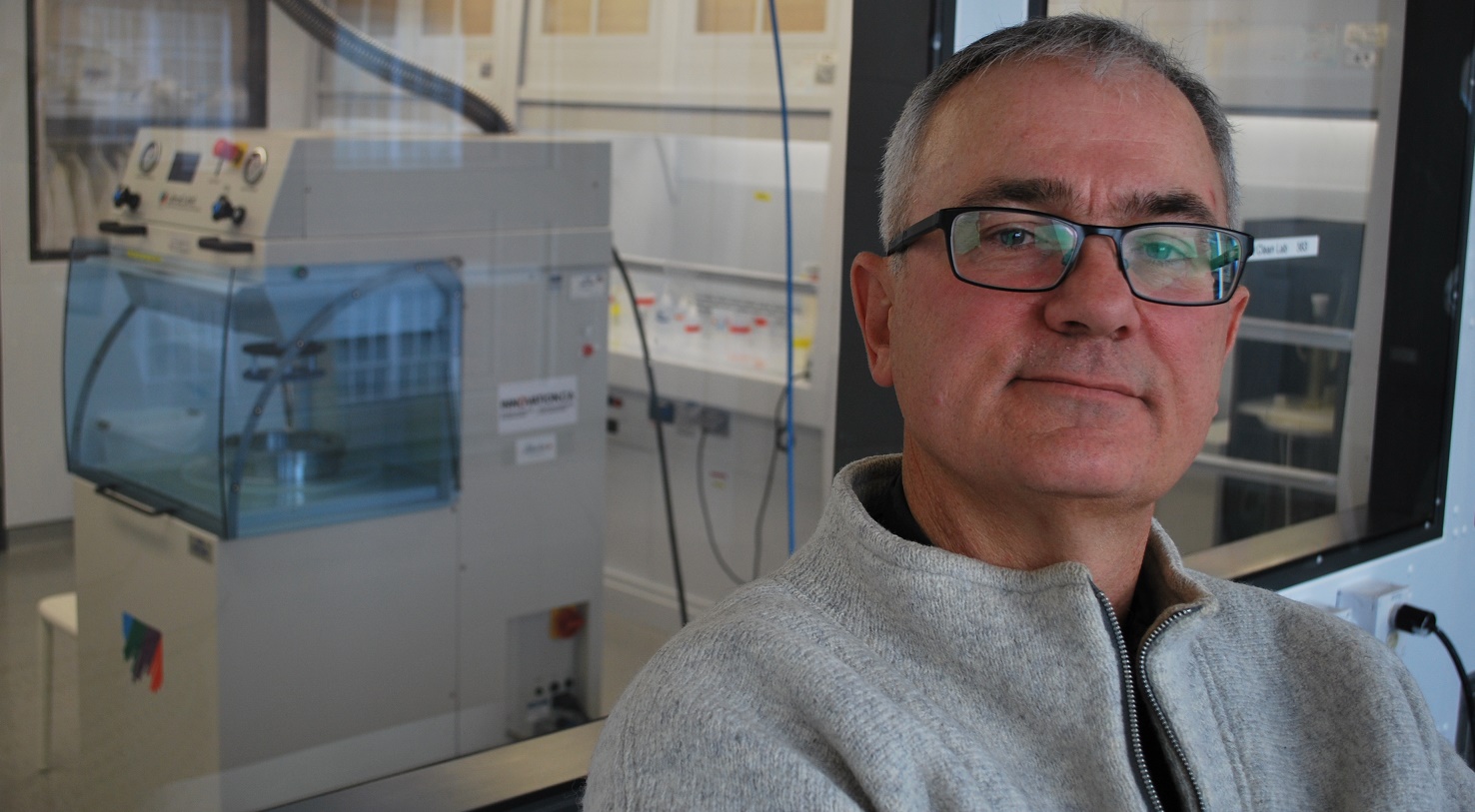
Soil and water researcher William Shotyk in his SWAMP Lab, a metal-free ultra-clean lab capable of measuring extremely low concentration levels of metals.
Using an ultra-clean laboratory capable of measuring far more sensitively and accurately than ever before, soil and water researcher William Shotyk has failed to find significant contamination from five trace elements in the Athabasca River near oilsands industry operations.
This study contradicts findings from previous studies that detected elevated concentrations of 13 trace elements, including those that Shotyk tested for, in the Athabasca River as far as 200 kilometres downstream of oilsands operations.
It is one of three, just-published studies by University of Alberta researchers to find no elevation in levels of toxic metals in the river.
In the first study, Shotyk and his team found that levels of silver, cadmium, lead, antimony and thallium (all trace elements that are toxic to living organisms) are not measurably different upstream and downstream of oilsands tailings ponds and upgraders in Fort McMurray, over the 125-kilometre stretch of the Athabasca River they studied.
"We don't have any water samples dating from 1966, before industry started, but we have water samples from upstream of industry-we know what the water is like before industry receives it," said Shotyk, the Bocock Chair for Agriculture and the Environment in the Department of Renewable Resources.
"Strictly speaking, from a statistical perspective, there was no discernable difference, downstream versus upstream."
To measure his water samples, Shotyk used the SWAMP lab, a facility he designed which began running two years ago.
"Its's ultra-clean, which means we measure what's in our samples and not the extent to which we've contaminated them," said Shotyk.
"To be able to measure trace elements reliably in water, we need a metal-free clean lab. Our whole lab is made of plastic polypropylene, and we filter air through a high-efficiency particle filter so the air in our cabinets where we are measuring has zero particles. We also produce our own acid in a quartz still, so we use ultra-pure acid to clean bottles, filters, syringes and lab instruments. With this lab, we can measure extremely low concentration levels."
For example, the average concentrations of dissolved silver his team measured in the river water samples are nearly 20 times below the limits of detection that were available for the paper that was published previously, also by researchers at the University of Alberta, said Shotyk.
In a separate study, which measured dissolved and particulate lead, Shotyk's team also looked at snowmelt collected from peat bogs near open pit mines and upgraders to see if it might be contributing to pollution of the river.
Melting the snow in the SWAMP lab, Shotyk found that "almost all of the lead is in the particles, and very little is actually dissolved in the meltwater."
"The lead dissolved in the meltwater is between two and three parts per trillion. The cleanest ice in the Canadian arctic, thousands of years old, contains five parts per trillion. So snowmelt in northern Alberta contains really, really low lead levels."
In fact, said Shotyk, guidelines for lead in drinking water are 10,000 parts per trillion. "So that lead value in that snowmelt, on average, that's about 4,000 times less than drinking water guidelines."
However, Shotyk points out that lead is not a trace metal that is found in bitumen (the crude oil), at all. The lead in bituminous sands occurs naturally in the mineral fraction (the sand), which is about 85 per cent of the whole, and not in the bitumen itself.
"When you're lying on a beach are you worried about the lead you're getting from the sand?"
Shotyk believes there has been a lot of barking up the wrong tree on the environmental impact of heavy metals through industrial activity.
"It's very important for us to discern between perceived environmental impacts and real issues," he said.
Shotyk's first paper, on trace metals in the dissolved fraction of the Lower Athabasca River is published in the journal, Science of the Total Environment. The second paper, concerning snowmelt as a source of lead distribution in the Athabasca River, appears in Scientific Reports.
A third paper, on arsenic speciation (a measure of which chemical forms are present) in the Athabasca River, has just been published, too, by the journal Environmental Pollution. The lead author of that paper, graduate student Mark Donner, carried out his measurements in the metals speciation lab of Tariq Siddique, also in the Department of Renewable Resources. Donner found that dissolved arsenic concentrations in the river were low, not significantly greater downstream of industry compared to upstream, and were remarkably similar during the 2014 and 2015 water sampling campaigns, showing that the results are very reproducible.
All three studies were funded jointly by Alberta Innovates and COSIA (Canada's Oil Sands Innovation Alliance).